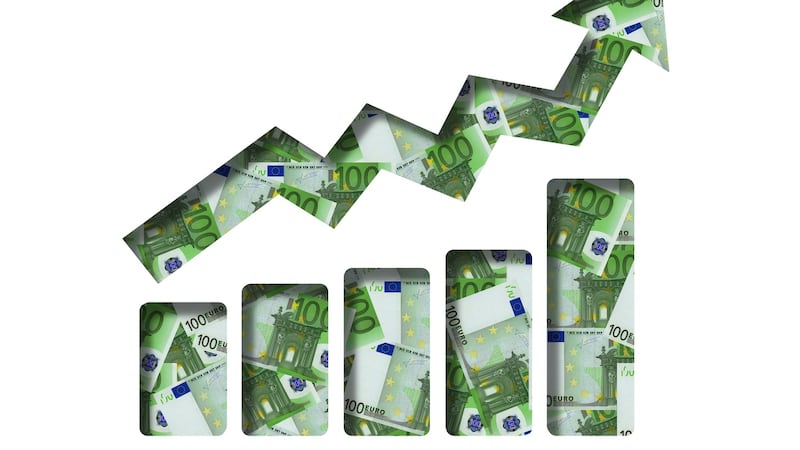When sustainable investing in major markets was worth $30 trillion in 2018, it was expected that in order to meet the goal of limiting the global temperature increase to 1.5 degrees by 2030, the figure would need to reach $90 trillion. That has been comfortably surpassed, as shown by a recent announcement from former Bank of England governor Mark Carney at Cop26.
He said that $130 trillion of assets "aligned with the Paris Agreement" are available from 450 companies that are members of the Glasgow Financial Alliance for Net Zero (GFANZ) private finance initiative.
There has been an exponential growth in green finance over the past number of years, says Richard Kelly, partner in finance and capital markets at Matheson. "In 2015, the total amount of green bonds outstanding globally was $104 billion. In 2021 alone $517 billion in green bonds were issued, bringing the total amount of green bonds outstanding to over $1.5 trillion, a 15-fold increase in six years. While the green and sustainability linked loan market is smaller than the green bond market, with approximately $681 billion outstanding, it is growing quickly."

With this remarkable growth in mind, what is green finance exactly and what are the opportunities it holds for the Irish financial services sector?
What it means
Green finance can refer to any funding that is provided to an environmentally sustainable project or activity, says Brian Haugh, head of BDO’s Valuation and Financial Modelling Centre. “The biggest area of focus for green finance has been the funding of projects that seek to reduce or eliminate the amount of greenhouse gases emitted into the atmosphere, such as renewable energy, reduced energy use, reduced emission fuel, and carbon-capture projects.
“It can also take the form of preferential ‘green rates’ for lending to organisations that engage in environmentally friendly practices such as building houses to high environmental standards.” He says that green finance has the potential to be one of the most effective tools deployed to fight climate change as it specifically targets areas that will reduce the amount of the greenhouse gases, which are responsible for rising temperatures released into the atmosphere.

Kelly says green financing can also be used by companies looking to borrow to fund a green project (such as retrofitting a building to make it more energy efficient), or more generally to support activities aimed at transitioning to a sustainable economy.
Ordinary people can get in on the action too, with multiple banks providing discounted green mortgages to support customers who want to buy energy-efficient homes, as well as discounted green personal loans for upgrading home insulation or installing renewable energy systems. "These products have the additional benefits of helping customers make their homes warmer and less costly to heat," says Mary Whitelaw, director of corporate affairs, strategy and sustainability at AIB.
Climate change
“As the International Panel on Climate Change has highlighted, climate change is a grave and mounting threat to our wellbeing and to a healthy planet,” says Whitelaw. “The IPCC has warned that if we are to avoid mounting loss of life, biodiversity and infrastructure, ambitious, accelerated action is required to adapt to climate change. Green finance is designed to back initiatives that help lower carbon emissions and reduce global warming.”

The United Nations Environmental Programme (UNEP) defines green financing as increasing the level of financial flows – be they from banking, micro-credit, insurance or investment – from the public, private, and not-for-profit sectors to support sustainable development priorities, she says.
One such green project is the €500 million Greenlink Interconnector linking Ireland and Wales, backed by a consortium of banks. “The project will enable additional renewable energy sources on the Irish power system, enhance Ireland’s security of supply and reduce energy pricing volatility,” says Whitelaw.
Investment opportunities
The International Monetary Fund (IMF) has estimated the investment required to finance the transition to a low-carbon economy in Ireland at circa €20 billion per annum over the next decade, much of which will come from the private sector, says Whitelaw. "That will create investment and lending opportunities for the financial services sector."
The EU’s Sustainable Finance Disclosure Regulation has introduced a clear European standard on disclosure for green funds, with Ireland well placed to be the domicile of choice for green funds given it is a leading European fund centre (with over €4 trillion in assets held in Irish funds), says Kelly.

“The EU is also considering extending its EU Green Bond standard to cover securitisation transactions, provided the securitisation promotes environmental aims. Over 30 per cent of EU securitisation vehicles (with over €1 trillion in assets) are established in Ireland, meaning Ireland will likely be at the forefront of the green securitisation market.”
A healthy future
Haugh says that Irish financial institutions are already capitalising on investor appetite for Green Bonds, which provide funding exclusively for activities that have a positive environmental impact, and utilising these funds to finance projects and businesses to reduce emissions. “There’s unlikely to be any shortage of demand for green finance in Ireland in the coming years, with an estimated €125 billion required by 2030 to deliver on Ireland’s Climate Action Plan, the majority of which is expected to be funded by the private sector.”
Whitelaw adds: “The demand for finance to support the transition to a low carbon economy is predicted to run to trillions of dollars globally as countries and companies seek to build the clean energy infrastructure required to avoid the worst impacts of climate change.”
[ Sign up for monthly Special Reports insights, delivered straight to your inboxOpens in new window ]
















